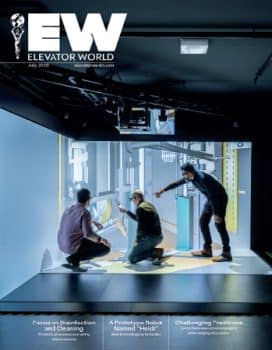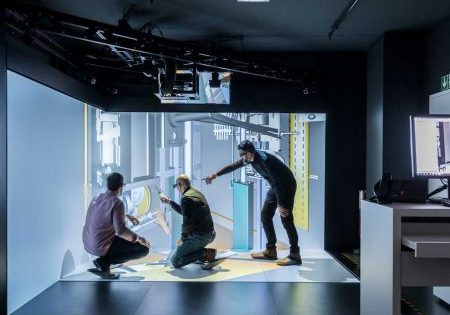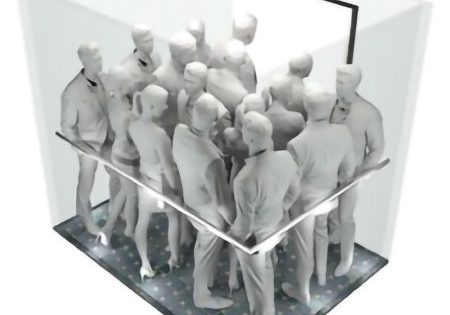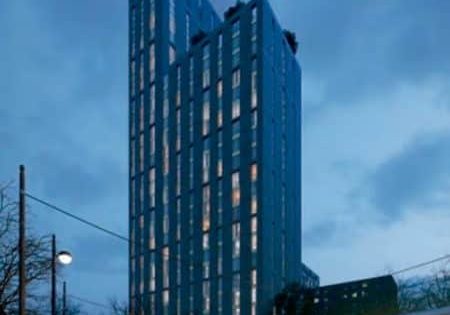Pandemic response has changed the way elevators are used.
by Chip Nyborg
Friends, family and colleagues from out of state ask me how it’s going in the epicenter whenever we chat/text/email. To me, and many other New Yorkers, this is the new normal. We have already altered course and gotten on with the changes. We are ready for a return to our pre-COVID-19 pandemic ways; if that ever happens is anyone’s guess. Invariably, I am asked, “How is business? What’s happening in NYC?” I thought it would be interesting to take a look at some of the “new normals” for elevator use in and around NYC and how buildings are going to have to adapt to new elevator usage patterns.
The overall usage of residential and commercial elevators is down during quarantine. People are not going into the office, gym, hair/nail salons or restaurants, and they are not entertaining. Elevator usage is down, and so are service calls. We have clients in the New York State “Containment Zone” around New Rochelle. In one building, the residents — mostly retirees — were in lockdown, with very little elevator usage — mostly for mail and laundry. Another building in the containment zone barely noticed a change.
Not surprisingly, no one wants to share a ride in an elevator. When the elevator stops to pick you up at your landing, chances are, if there is a passenger in it, you’re going to wait for an empty elevator or take the stairs. Not to mention that the person inside the elevator will be peering over their mask at you and giving you an evil glare, like, “Don’t you think of stepping in here!”
Pre-pandemic elevator riders rarely made eye contact or started small talk with anyone else sharing the elevator ride. Is that just an NYC thing? But now, everyone has the same reaction: when the elevator has more than one passenger in it, we turn and duck our heads to avoid the possible stream of pathogens. What good that does in a 4-X-6-ft enclosure, I am not sure, but, psychologically, it helps. Another change: registering a hall call or car call with a gloved hand is still done with your knuckle. Only a knave uses his finger! Many of us have been using a knuckle to register calls for years, nothing new here. It’s just that, now, we are wearing gloves while in public, and using the knuckle too — even better, a knuckle on your non-dominant hand.
If you live or work on a floor close to the street, and are in shape, you’ll likely take the stairs up or down. Again, hopefully, no one else is in the stairwell while you are in it. When encountering someone else on the stairs, it is best to stop at a stair landing and look away when they pass by – an increase in social distancing. Down-traveling stair users pass by, while the upward-bound person catches his or her breath at the landing. There should be no coughing, sneezing or heavy breathing when near someone else. Everyone is supposed to oblige and momentarily hold their breath when passing by.
No one wants to share a ride in an elevator. When the elevator stops to pick you up at your landing, chances are, if there is a passenger in it, you’re going to wait for an empty elevator or take the stairs.
Whether in an elevator, a stairwell or out and about, make sure you have your mask on, and not just covering your mouth — make sure your nose and mouth are covered. Your state of health is instantly summed up by virtue of your mask. Is your mask on properly? Is it dirty or old and ratty? Are you wearing gloves? Do you look disheveled, or neat and organized? Not that germs care about neat and clean masks, but people are going to make an assessment of those around them.
Instantaneous factoring of visible clues determines whether there will be more than one person in the elevator. So, when riding in elevators, you need to be wearing the requisite personal protective equipment (PPE), and, if another passenger comes into the elevator — or you are getting in an elevator with another passenger already in it — maintain as much space as possible between you and any others. Look away, don’t breathe too heavily, and never cough or sneeze.
To avoid unnecessary contact and possible exposure to COVID-19 germs, elevator riders are using objects like keys, pocketknives (closed), canes or other objects to register a call. This is causing the buttons to prematurely wear and break. There are new gadgets available for the nervous Nellies to push buttons or pull levers and handles, like the Symmons Safekey or the Brass Finger, which are antimicrobial hand tools. Building maintenance staff are being directed to clean and wipe down everything inside the elevator, especially the buttons, multiple times a day. Earnest staff members are spraying disinfectant right on and into the buttons. Elevator buttons are another casualty of the pandemic.
When the new normal kicks in, and people start heading back to work in office towers that hold thousands of workers, there will be a new process for getting to your floor. Many high-end office towers in NYC have touchless call screens fed by a destination dispatching feature activated upon entering the elevator vestibule to alleviate congestion in the elevator lobby. How will building personnel process the morning rush? Will workers be queued, standing 6 ft apart while waiting, getting an infrared thermometer scan, donning facemasks, etc. for the elevator to take maybe only two to four passengers per trip? Will the workday start at different times, meaning a staggered schedule for getting to your floor? This means that more elevator usage with fewer passengers, more wear and tear on the elevator equipment, and more electrical consumption are likely to be part of the new normal.
Perhaps the bigger long-term question is, “How many people are going back to work in their offices?”
Perhaps the bigger long-term question is, “How many people are going back to work in their offices?” With a decrease in economic activity, how many layoffs will result? Add to the potential permanent layoffs, the quarantine has accelerated remote working. Zoom has allowed remote meetings. Voice over Internet Protocol-based phone systems automatically transfer calls to phones outside the office. So, really, if your job does not solely depend upon working in the physical office, chances are you will likely stay working from home. Fewer people coming to work will help offset some of the potential increase in elevator usage. Will office space need to expand to allow for social distancing, thus increasing demand in buildings for more space? Or, will the reduction in the workforce allow a tenant to repurpose existing space to accommodate social distancing? Terms, conditions and square footage of leases set to expire or be renewed within the next six months will be a prediction of the future of large office buildings. Regardless, there will be fewer workers in office towers.
There are many older, beautiful, architecturally significant buildings throughout NYC and the boroughs. Those buildings typically have systems and equipment that are grandfathered in, as opposed to newer buildings that comply with recent building codes. How will the leases hold up in those buildings? Will buildings with a younger workforce naturally and easily transition to remote working? Many younger workers are attracted to new and upstart companies of the digital age. Many of those businesses are located in hip and repurposed older buildings.
Will a vaccine allow all of us to go back to our pre-pandemic ways, or will recent habits and trends become the new normal? Time will tell. Currently, elevators are not being used as much as before, but soon, when people start going to work in the office towers of NYC, they might be making more trips than ever, perhaps twice as many, thus reducing the useful life of elevators at a rate almost double that of what was typical before. Then again, future elevator usage in office towers depends on how many workers actually commute to work, so the occupancy rates in office buildings comes into question. Cities need to aggregate workers. What will compel people to continue to work and live in metropolitan areas?
Get more of Elevator World. Sign up for our free e-newsletter.







